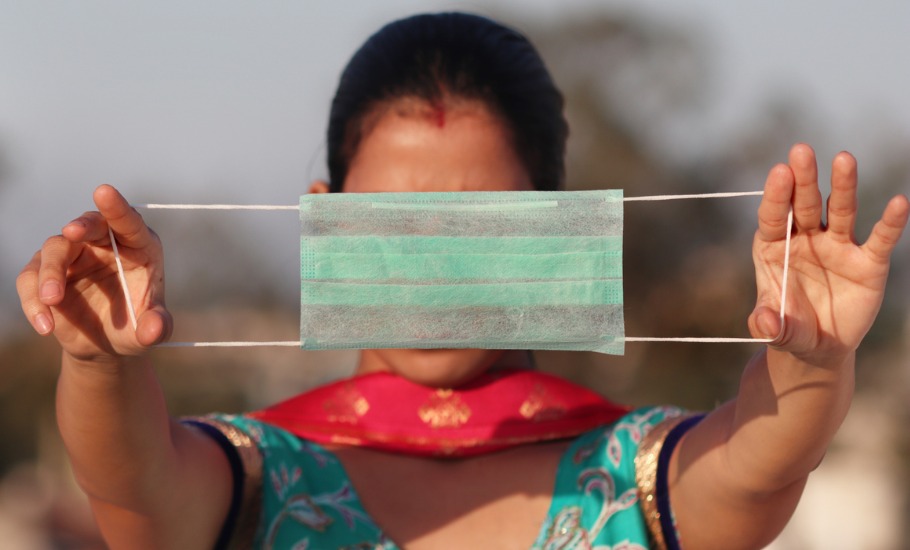
Women, the missing piece in COVID media coverage
A study done by the Bill and Melinda Gates Foundation shows how under represented women are in the media reportage on Covid across the world.

A study by the Bill and Melinda Gates Foundation shows how under-represented women are in the media reportage on COVID across the world.
The sample study done by the Foundation across six countries, including India, throws light on the missing perspectives of women related to the pandemic. The report discloses substantial bias towards men’s perspective in the news coverage of the pandemic across all regions.
According to the study, 100% of the COVID-19 response decision-making groups are men in England, the same is 93% in the US and 86% in India.
Also read: Gender inequality, patriarchy skewed India’s sex ratio
The study reveals that women face unique health-related challenges. While men are more likely to die of COVID-19, women in some countries (such as the four nations of the UK, South Africa and 18 out of the 28 states in the US who have released COVID-cases data) have been found to be more likely to fall ill. Reports also suggest that in some socially conservative countries in Africa and Asia, women may be left out of testing, leading to a substantial under-reporting of COVID-19 cases among women.
About 69% of health professionals globally are women, therefore they are more exposed to the virus. Women’s reproductive and sexual health are at heightened risk due to key services being scaled back and resources previously used to support women’s reproductive and sexual health being redirected to the containment of COVID-19.
The study finds that women face unique socio-economic pressures resulting from patriarchal social norms – for example as victims of growing gender-based violence, as primary caregivers, as spouses of deceased men in control of family finances and property; as homemakers with informal jobs, as part-time employees with less secure jobs, as lower income earners, and as parents more likely to live in single-parent households with higher numbers of dependents. Women are more likely than men to feel worried, but they are also very resilient. They are more likely to see unity whereas men see division and to find meaning in the hardship of the COVID-19 story.
Also read: When caste rears its ugly head in Covid times, education is the casualty
The report further observes that women have become heavier news consumers during the pandemic while enduring higher than usual levels of anxiety and worry. TV and social media are the biggest platforms for the consumption of COVID-related news by women.
On the other hand, women’s expert voices in COVID-19 stories are tangibly marginalized (even more so than in non-COVID news stories): Content analysis of 2,100 sampled quotes from 80 publications across six countries showed that men were quoted nearly three times more frequently in the news about COVID-19 than women in the UK, nearly four times more frequently in Kenya, more than four times more frequently in the US, nearly five times more frequently in South Africa and Nigeria and five times more frequently in India.
Women were four times less likely to feature as experts and commentators in the 175 most highly ranked COVID-19 and coronavirus stories from the top five providers in each of the six countries, identified using Google’s news search engine.
Women constituted 19% of experts vs. 77% men (4% were unidentified) in the 175 most highly ranked COVID-19 and coronavirus articles across the six countries, identified via Google’s news search. While just under a quarter (23%) of all people quoted in these articles were politicians, only 13% of these were women which partly reflects women’s disproportionate marginalization in COVID-related political decision-making and partly the extent to which they are overlooked as experts.
The analysis of 44,164 sampled stories across the six countries showed that women were nearly five times less likely to feature as protagonists in news coverage headlines than men in the US, nearly four times less likely to do so in South Africa and Nigeria, three times less likely in India and Kenya and nearly three times less likely in the UK. Politicians, who are significantly more likely to be men in all of the analyzed countries, are leading the coverage of COVID-19. This has resulted in the coverage of women protagonists in COVID-19/coronavirus stories being extruded.
Only 25% of the 175 most highly ranked COVID-19 and coronavirus stories across the six countries, identified via Google’s news search, centred around people; 74% of the stories were centred around hard facts and only 9% contained an element of a human interest story which is more likely to draw women in.
The gender equality dimension has been lacking from news coverage during the COVID-19 pandemic with more than 99% of the coverage missing this dimension entirely in all analyzed countries. The framing of the pandemic in the news has been shown by academics to be critical because it influences policy decision-making with respect to the COVID-19 response.
The dominant frames in the news focus on the COVID-19 problem or its causes and are obscuring women’s unique challenges. The most commonly used frames are the health severity, economic consequences, medical/ scientific, globalization, attribution of responsibility and public action frames. Within these, there is little space for women’s specific needs or for gender equality issues.
The three key gender equality indicators that applied in the study are; Women as sources of news expertise (newsgathering) , News stories leading with women protagonists (news outputs) and the coverage of gender equality issues related to COVID.


